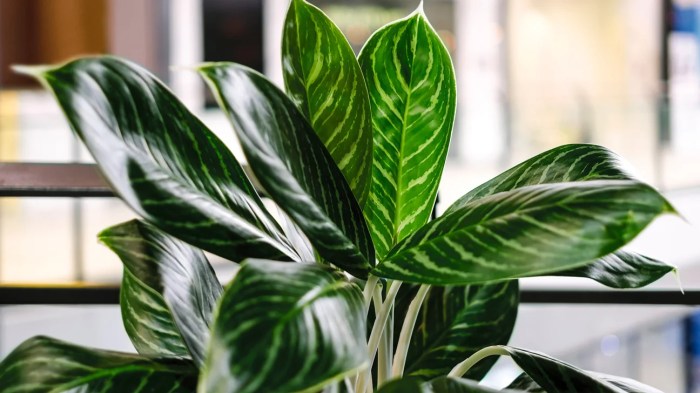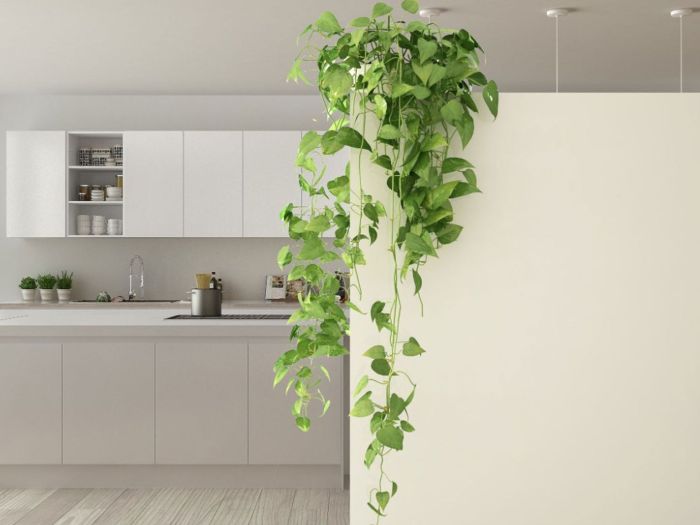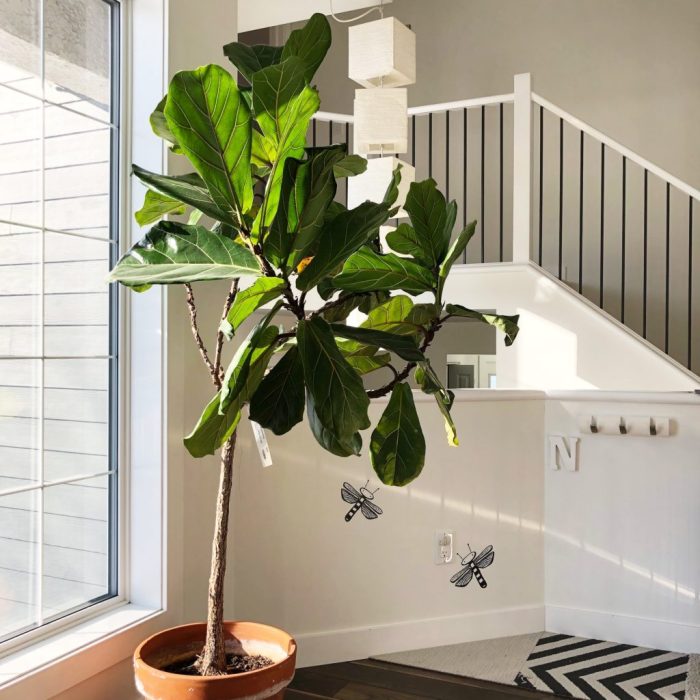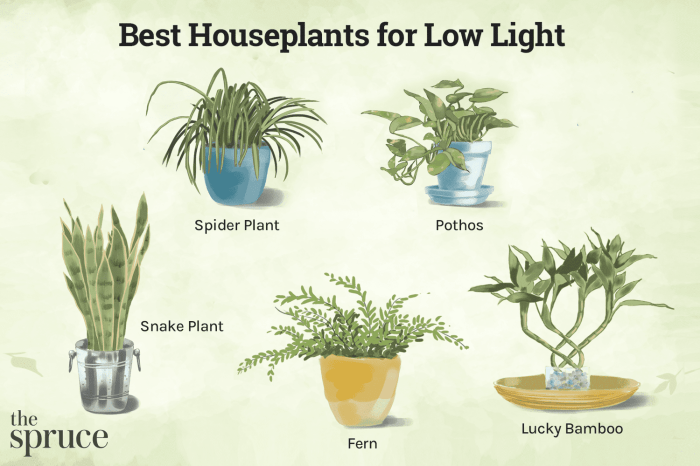Bring life and vitality to your indoor spaces with the best low maintenance indoor hanging plants. These easy-care beauties offer a touch of nature and enhance your décor without demanding excessive attention.
From purifying the air to adding a touch of elegance, hanging plants offer a myriad of benefits. With their cascading foliage and vibrant hues, they create a sense of height and depth, transforming your home into a verdant oasis.
Plant Selection and Characteristics

When selecting low-maintenance indoor hanging plants, consider factors like light requirements, water needs, and size. Choose plants that thrive in the available light conditions and don’t require frequent watering. Consider the size of the hanging space and the plant’s growth habit to avoid overcrowding.
Popular Low-Maintenance Hanging Plants
- Spider Plant (Chlorophytum comosum): Tolerant of low light and infrequent watering, produces spiderettes for easy propagation.
- Pothos (Epipremnum aureum): Thrives in bright indirect light and can tolerate dry spells, ideal for busy plant owners.
- Snake Plant (Sansevieria trifasciata): Low-light tolerant, drought-resistant, and known for its air-purifying qualities.
- ZZ Plant (Zamioculcas zamiifolia): Extremely low-maintenance, can tolerate extreme neglect, and prefers bright indirect light.
- String of Hearts (Ceropegia woodii): Trailing plant with heart-shaped leaves, prefers bright indirect light and moderate watering.
Benefits of Hanging Plants
Hanging plants not only add aesthetic appeal but also offer practical benefits. They can improve indoor air quality by removing pollutants, increasing humidity, and releasing oxygen. Additionally, hanging plants can help reduce stress and create a sense of tranquility in indoor spaces.
Care and Maintenance Tips

Maintaining low-maintenance hanging plants is relatively easy, but it still requires attention to ensure their health and appearance. Regular care, including watering, fertilizing, pruning, and cleaning, is essential for keeping these plants thriving.
Proper care can also help prevent common problems such as yellowing leaves or pest infestations. By following these simple tips, you can keep your hanging plants healthy and beautiful.
Watering
Watering is crucial for hanging plants, but it’s important to avoid overwatering, which can lead to root rot. Allow the soil to dry out slightly between waterings, and water thoroughly when the soil is dry to the touch.
The frequency of watering will vary depending on the plant species, pot size, and environmental conditions. As a general rule, water more frequently during the growing season (spring and summer) and less frequently during the dormant season (fall and winter).
For those seeking low-maintenance greenery, indoor hanging plants offer a convenient and stylish solution. From trailing pothos to cascading ferns, these plants bring life and freshness to any space. For bedrooms, consider best hanging bedroom plants such as lavender, known for its calming aroma, or air-purifying spider plants.
These low-maintenance options enhance the ambiance and well-being of your indoor sanctuary.
Fertilizing
Fertilizing hanging plants is not essential, but it can help promote growth and flowering. Use a balanced liquid fertilizer diluted to half strength and apply it once a month during the growing season.
Avoid over-fertilizing, as this can damage the plant. If you notice any signs of fertilizer burn, such as brown or yellow tips on the leaves, flush the soil with water to remove excess fertilizer.
Pruning, Best low maintenance indoor hanging plants
Pruning hanging plants is necessary to remove dead or damaged leaves and stems and to encourage new growth. Use sharp, clean shears to prune the plant as needed.
Among the best low maintenance indoor hanging plants are pothos, spider plants, and philodendrons. These plants thrive in indirect light and require minimal watering, making them ideal for busy individuals or those new to plant care. For a unique and stylish way to display these plants, consider using a bedroom wall planter . Wall planters not only save space but also add a touch of greenery to your bedroom, creating a relaxing and inviting atmosphere.
Additionally, hanging plants can help purify the air, improving your overall well-being. Whether you choose to hang them in a corner, above your bed, or near a window, these low maintenance indoor hanging plants will bring life and beauty to your bedroom while requiring minimal effort.
When pruning, remove any leaves or stems that are yellow, brown, or wilted. You can also prune back long or trailing stems to keep the plant within its desired shape and size.
Cleaning
Regular cleaning is essential for keeping hanging plants healthy and attractive. Dust can accumulate on the leaves, blocking sunlight and inhibiting photosynthesis. Wipe down the leaves with a damp cloth or use a soft brush to remove dust and debris.
You can also mist the plants with water to increase humidity and remove dust. However, avoid over-misting, as this can lead to fungal diseases.
Troubleshooting Common Problems
Even with proper care, hanging plants can sometimes develop problems. Here are a few common problems and their solutions:
- Yellowing leaves:This can be caused by overwatering, underwatering, or nutrient deficiency. Check the soil moisture and adjust watering accordingly. Fertilize the plant if necessary.
- Brown or crispy leaves:This can be caused by underwatering, low humidity, or sunburn. Increase watering frequency and humidity, and move the plant out of direct sunlight.
- Pests:Aphids, mealybugs, and spider mites are common pests that can infest hanging plants. Treat infestations with insecticidal soap or neem oil.
Design Considerations
Incorporating hanging plants into interior design can elevate the aesthetic appeal of any room. From modern to bohemian and rustic styles, these versatile plants add a touch of nature and create a sense of height, depth, and interest.
For those seeking hassle-free indoor greenery, low-maintenance hanging plants offer a vibrant solution. Among these, best indoor hanging succulents stand out for their hardiness and striking visual appeal. Their adaptability to various lighting conditions and infrequent watering requirements make them ideal for busy individuals or those with limited time for plant care.
By incorporating these low-maintenance indoor hanging plants into your space, you can enjoy the beauty of nature without the burden of demanding upkeep.
Modern interiors can benefit from hanging plants with clean lines and simple silhouettes. Suspend them from the ceiling with macrame hangers or wall-mounted shelves for a contemporary look. In bohemian spaces, macrame hangers and woven baskets create a cozy and eclectic atmosphere.
Rustic interiors pair well with hanging plants in terracotta pots or wooden baskets, adding warmth and character.
Creative Display Ideas
- Macrame Hangers:Woven macrame hangers add texture and a bohemian touch, showcasing plants elegantly.
- Wall-Mounted Shelves:Display hanging plants on wall-mounted shelves to create a vertical garden effect, saving floor space.
- Ceiling Hooks:Suspend plants directly from the ceiling using hooks for a minimalist and airy look.
- Chandeliers:Repurpose chandeliers by hanging plants from their arms, creating a unique and eye-catching centerpiece.
- Ladders:Use old ladders as plant stands, adding a rustic charm and providing multiple levels for display.
Plant Combinations and Companion Planting

Creating visually appealing indoor hanging gardens involves selecting complementary plants that enhance each other’s beauty and growth. Companion planting, a technique that pairs different species, offers benefits such as improved growth, reduced pest problems, and enhanced aesthetics.
Pairing for Visual Appeal
- Consider plants with contrasting colors, such as variegated pothos with deep green philodendrons.
- Combine plants with different textures, like the velvety leaves of African violets with the glossy foliage of spider plants.
- Pair plants with varying growth habits, such as trailing ivy with upright ferns, to create a dynamic display.
Companion Planting Benefits
- Certain plants, like nitrogen-fixing legumes, can improve soil fertility for neighboring plants.
- Companion planting can attract beneficial insects that prey on pests, reducing the need for chemical treatments.
- Some plants release compounds that inhibit pest growth or deter insects.
Successful Plant Pairings
- Ferns and Philodendrons:Ferns provide humidity and shade, while philodendrons add color and air purification.
- Spider Plants and Peace Lilies:Spider plants remove toxins from the air, while peace lilies bloom with elegant white flowers.
- Pothos and African Violets:Pothos trails gracefully, while African violets add a touch of color and bloom.
Troubleshooting and Problem-Solving

Identifying and addressing common issues is crucial for maintaining the health and beauty of low-maintenance hanging plants. Regular monitoring and early intervention are key to resolving problems effectively.
Pest and Disease Management
- Aphids:Tiny, soft-bodied insects that feed on plant sap, causing yellowing, stunted growth, and honeydew secretions.
- Mealybugs:Cottony white insects that feed on stems and leaves, leading to wilting and yellowing.
- Spider mites:Microscopic pests that cause stippling and yellowing on leaves.
- Powdery mildew:A fungal disease that forms a white powdery coating on leaves, hindering photosynthesis.
To combat pests and diseases, use insecticidal soap, neem oil, or horticultural oils. Regularly inspect plants for signs of infestation and isolate affected plants to prevent spread.
Nutrient Deficiencies
- Nitrogen deficiency:Yellowing of leaves, stunted growth.
- Phosphorus deficiency:Purple or reddish coloration on leaves, poor root development.
- Potassium deficiency:Yellowing and browning of leaf margins, reduced fruit and flower production.
To address nutrient deficiencies, fertilize plants with a balanced liquid fertilizer. Follow label instructions carefully to avoid over-fertilization.
Other Issues
- Overwatering:Yellowing leaves, root rot.
- Underwatering:Wilting, dry soil.
- Improper lighting:Stunted growth, leaf discoloration.
Adjust watering frequency and provide appropriate lighting to maintain optimal plant health. Regular pruning can promote airflow and reduce the risk of disease.
Closing Notes: Best Low Maintenance Indoor Hanging Plants

Incorporating low maintenance indoor hanging plants into your home is not just about adding greenery; it’s about creating a living, breathing masterpiece that brings joy and tranquility to your daily life. With minimal effort and a little TLC, these plants will thrive, adding a touch of nature’s beauty to your indoor haven.
Popular Questions
What are the key factors to consider when choosing low maintenance indoor hanging plants?
Consider light requirements, water needs, and size to ensure the plant thrives in your indoor environment.
What are some popular low maintenance hanging plants?
Pothos, spider plants, and philodendrons are popular choices due to their hardiness and minimal care requirements.
How can I troubleshoot common problems with hanging plants?
Yellowing leaves may indicate overwatering or nutrient deficiency, while pests can be managed with insecticidal soap or neem oil.